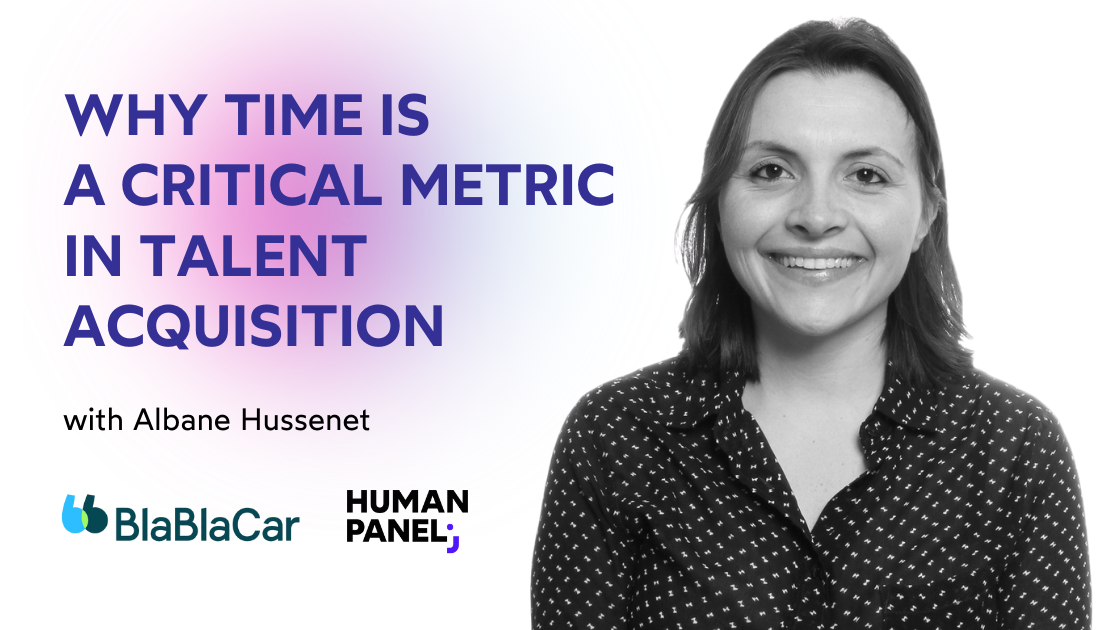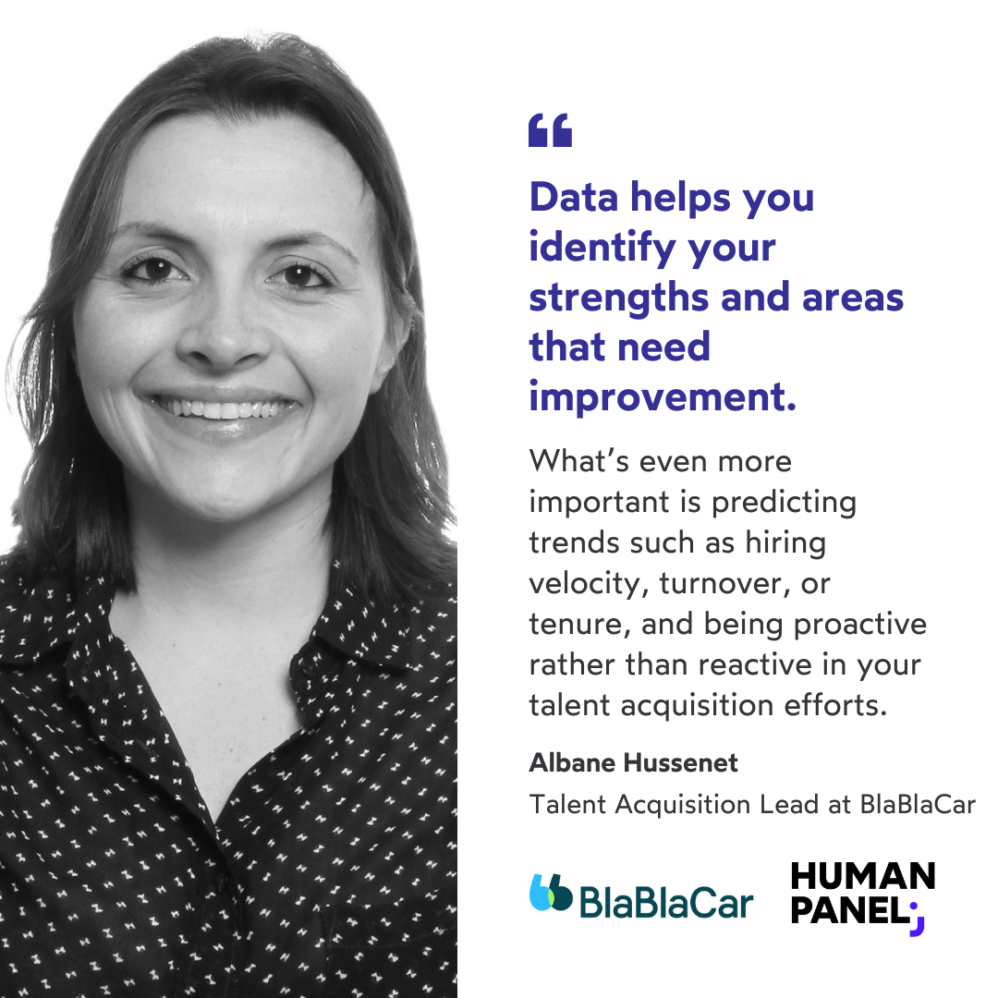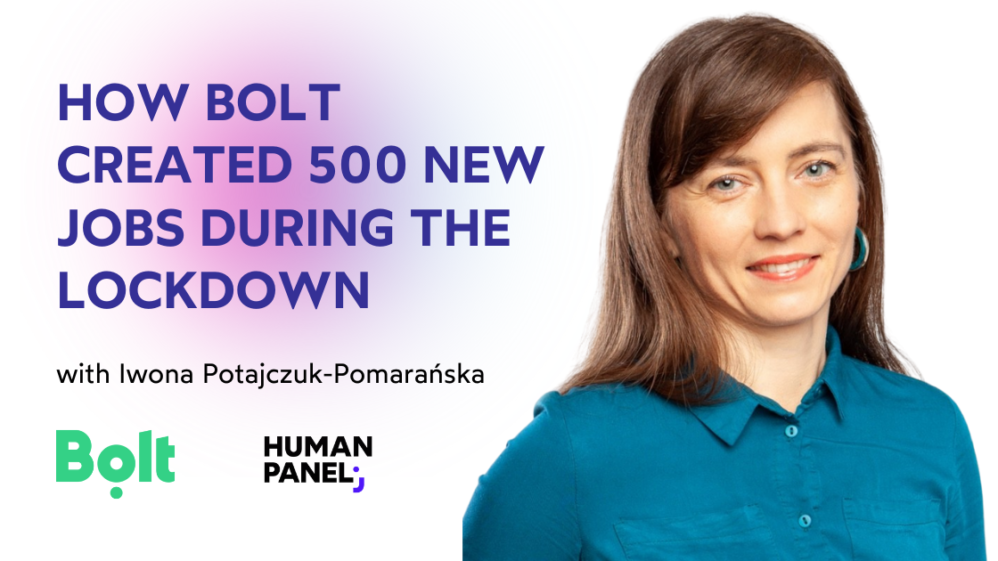BlaBlaCar: Why time is a critical metric in talent acquisition

We talked to Albane Hussenet of BlaBlaCar about diversity, the speed of talent acquisition and the role of HR analytics.
BlaBlaCar is the world’s leading carpooling platform, present in 22 markets. The company aims to become a go-to marketplace for shared travel, and continues to expand its international team.
Currently, BlaBlaCar employs 700 people in 7 countries and is hiring extensively, constantly looking for people passionate about innovation and impact.
BlaBlaCar is also a finalist in the 2021 LinkedIn Talent Awards Contest in the Talent Insights Pioneer category.
The Talent Acquisition team at BlaBlaCar is organized in two main locations: Paris, France, and Kyiv, Ukraine, that operate in all employee locations and address the needs of all local teams. Human Panel had the opportunity to speak with Albane Hussenet, Talent Acquisition Lead at BlaBlaCar.
Human Panel: BlaBlaCar is now present in 22 markets and employs more than 700 people. How do you create a talent acquisition funnel in such an international and diverse work environment?
Albane Hussenet, Talent Acquisition Lead at BlaBlaCar: Our team works from start to finish. First, we define the company’s needs and ask hiring managers about the role and requirements. We also involve them in creating job descriptions.
Then, we make sure our Talent Acquisition team is well onboarded and has extensive expertise in a particular role. It is important that recruiters know what is expected of them: what skills they need to assess and what the profile of the perfect candidate looks like.
Once everything is clear, we proceed with posting job vacancies and sourcing candidates through various channels. Then, we conduct a series of video interviews to discuss the candidate’s experience, technical and soft skills, and motivation.
Our Talent Acquisition team also handles the pre-onboarding phase to stay in touch with our new hires and guide them through their first days at the company.
Another unique feature of our process is our referral policy: we refer candidates who are not a perfect fit to other companies – especially in the tech industry. If we have a great candidate who does not fit the role for whatever reason, we refer them.

What role does analytics play in the TA process?
We focus on the most important HR recruitment metrics, especially those related to time, as it is critical in recruiting. First, competition is fierce today and second, you need to keep a candidate very engaged throughout the recruitment process. If you drag the process out too much, you can easily lose people.
What we track is:
- Time to process. A metric we use to measure time to hire from the candidate’s perspective – from the first contact to the offer.
- Time to hire. A metric we use to measure the efficiency of the funnel. It’s the time between the day we post a job opening and the day we make an offer.
- Time to start. An important metric for hiring managers. It is the time between the publication of the job ad and the applicant’s first day of work.
In addition, our process carefully examines candidates’ experience. Every candidate is asked to complete a CX survey, as is every hiring manager. Our goal is to ensure that we gather all possible insights about the process.
The third part of our TA analytics focuses on measuring the efficiency of our sourcing channels. We track conversion rates in relation to each channel and continuously test and iterate on different solutions to find the most effective one for a particular role and location. We have a multinational team in seven countries and understand that the most efficient tools and tactics can vary from market to market.
Do you have an example where you needed to change the sourcing strategy due to the specifics of a market?
We experienced something of a challenge last year when we were scaling our engineering team in Kyiv, Ukraine. It turned out that our strategy, which worked perfectly in France, did not fit the very fast-moving Ukrainian market with a large presence of outsourcing companies. We had to adapt to this fast process in order to be competitive and improve rates along the funnel.
I must say that we did our homework and learned a lot from this experience. Today, we understand the importance of knowing the complexities and specifics of a particular market.
Our goal now is to become even more efficient in acquiring talent.
Albane Hussenet, BlaBlaCar
We are working on cross-cultural training for the Talent Acquisition team, in order to fully understand our markets and adapt to the audience. We are also developing candidate personas in order to better target our sourcing and employer branding efforts.
BlaBlaCar celebrates diversity and is committed to creating an inclusive environment for all employees. How does analytics help you achieve this goal?
The first step was to make sure our TA/EB team was diverse. One example is we went for 1 to 9 different nationalities within the team.
We also educated the entire Talent Acquisition team and our managers on the unconscious biases we have as humans. Then, we started evaluating our job descriptions using tools that help us identify biased wording or phrases.
Another step was structuring our interviews to make sure we treated everyone the same. Today, we have specific scorecards and a set of skills clearly defined for each role.
BlaBlaCar also works with various organizations to encourage women to take on tech roles, as one of our goals is to achieve a better gender balance in the Tech team.
Albane Hussenet, BlaBlaCar
What results have you seen so far?
Increasing diversity is a long-term endeavor, and it does not happen overnight. That said, since we implemented the new strategy, we have seen a 2-point increase on the gender balance scale.
We also want to make sure our team is as international as our product. In France, for example, we have seen an increase of 10 points on the “Internationality” scale.
What do you see as the greatest value in data analytics?
Data helps you identify your strengths and areas that need improvement. Without data, you can only rely on your intuition or hunches – you do not really know your strong and weak points.
But what’s even more important – and this is BlaBlaCar’s next goal – is anticipating and predicting trends such as hiring velocity, turnover, or tenure so that you can be proactive rather than reactive in your talent acquisition efforts. Our business is highly data-driven and as the Talent Acquisition team, we aspire to operate that way too. Learn about how data is so central to BlaBlaCar in this video of our Data Engineering Manager, Kineret Kimhi.

What further progress do you plan to make with regard to HR analytics?
We would like to drive streamlined automation of all processes as well as data visualization and customization. Definitely, we would like to develop our data-driven diversity and inclusion policy further and drive the sourcing strategy. But we also have many smaller goals. We are an agile company and continuously make adjustments to all our processes.
Is time an important metric in your talent acquisition process? If you want to measure and track such metrics as time to hire, time to fill, and time to onboard, as well as improve the efficiency of your recruitment funnel, Human Panel can help you! Sign up for a free demo and see people analytics in action. Manage your HR through measurable KPIs and remove guesswork from your decisions.




